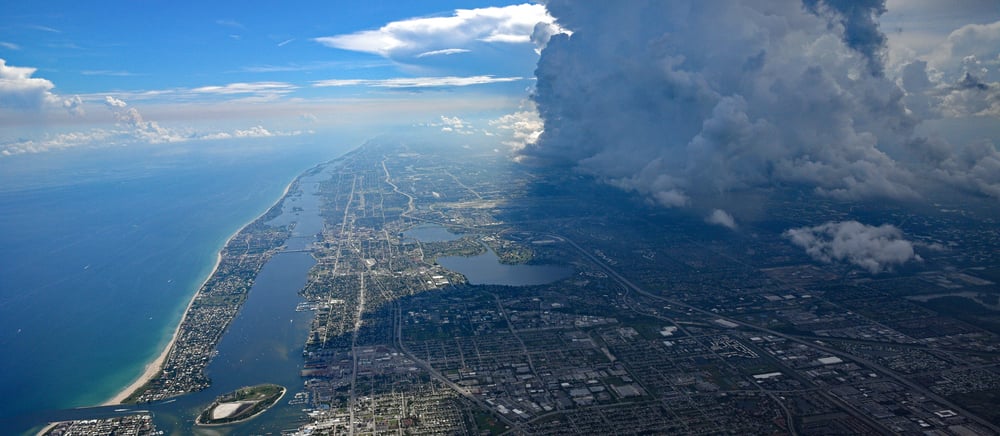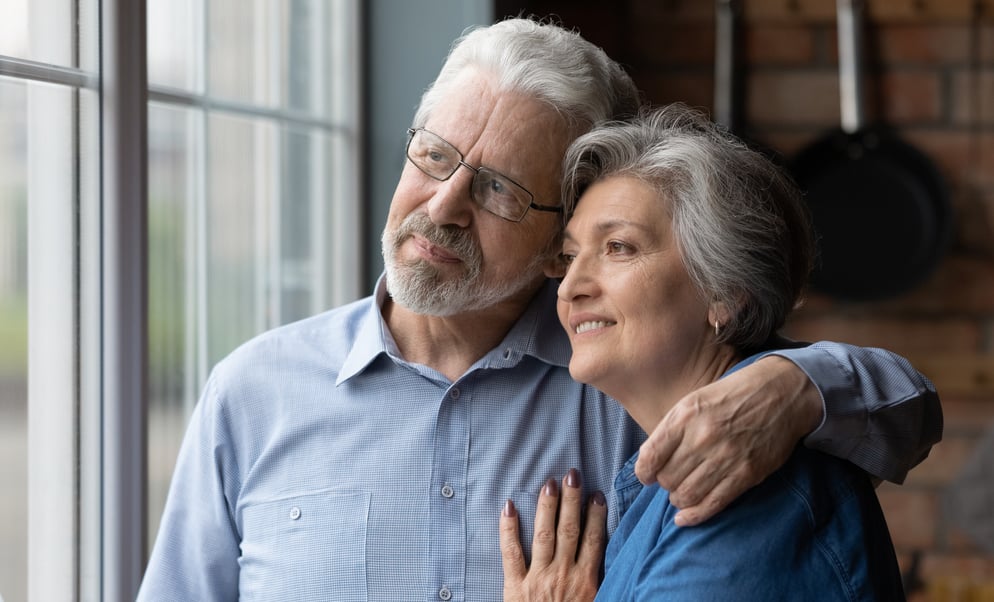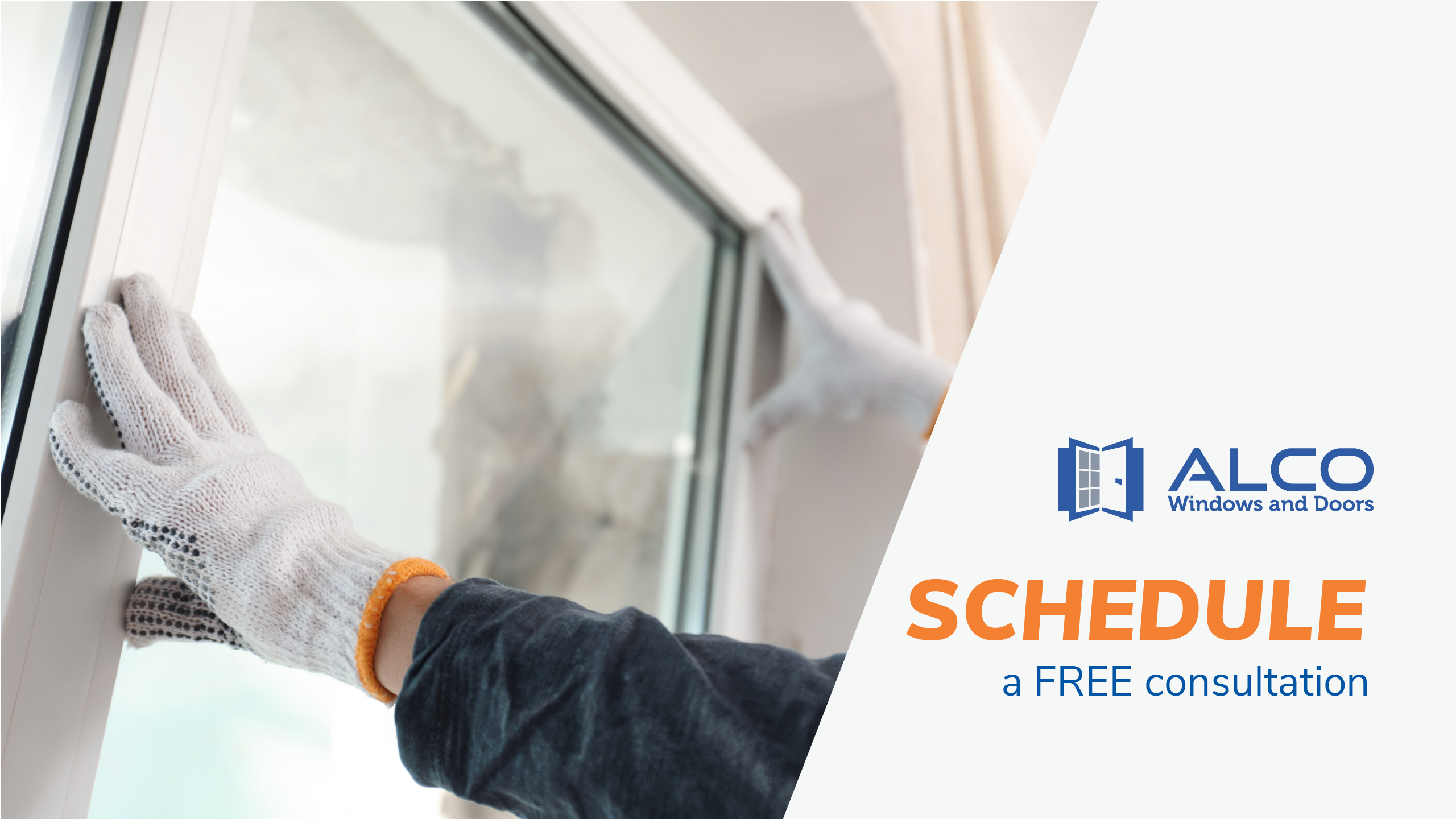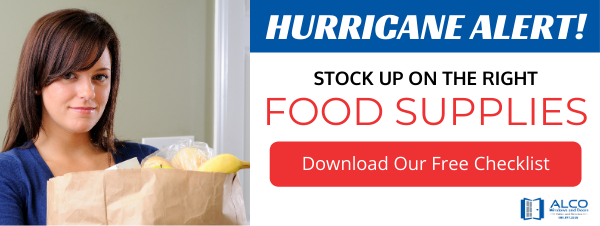With modern technology, meteorologists can identify, track, and warn residents living in areas vulnerable to tropical disturbances to start preparing ahead of a storm.
Understanding the difference between a tropical storm, a hurricane, and a tsunami will help you evaluate the risk factor and know which steps to take in preparation.
In this blog post, we help residents of South Florida better understand the weather patterns most commonly discussed in advance of severe weather to help you better plan your next steps.
Tropical Storm vs. Hurricane vs Tsunami: An Overview

Tropical storms and hurricanes are all fundamentally cyclones that originate over equatorial oceans. According to the National Ocean Service, both storms are defined as rotating closed weather systems with clouds and thunderstorms.
While there are differences between their characteristics and strengths, their propensity for damage remains constant. Miami homeowners are no strangers to this fact.
What Is a Tropical Storm?
The weakest form of a tropical cyclone is known as a tropical depression, with maximum sustained winds of 38 mph. When a depression intensifies to a point where its top sustained winds reach 39 miles per hour, it is termed a tropical storm. At this point, the National Hurricane Center assigns a name to the storm to avoid confusion as they track it - just in case there are other disruptions nearby.
Tropical storms are persistent in South Florida. They can pick up in intensity and turn into hurricanes in no time. Storms could also stall over one area resulting in heavy rainfall and colossal winds that can ruin your property.
What Is a Hurricane?
Tropical storms are precursors to hurricanes. This statement means that hurricanes develop from tropical storms. If a tropical storm intensifies to reach sustained winds of 74 mph, it is called a hurricane or typhoon.
The North Atlantic, eastern North Pacific, and central North Pacific use the term hurricane, while South Pacific and the Indian Ocean use the word typhoon for the same phenomenon.
The amount of damage caused by a hurricane increases linearly with its wind speeds. For that reason, experts can refer to the Saffir-Simpson Hurricane Wind Scale to estimate potential property damage.
The scale is a 1 to 5 rating based on a hurricane’s maximum sustained speeds. A Category 1 hurricane has the lowest wind speed, while a Category 5 hurricane has the most wind speed.
One of the well-known hurricanes in South Florida is Hurricane Andrew. In 1992, the hurricane hit the South Florida coast, resulting in over $25.5 billion worth of damages.
What Is a Tsunami?
Although there are elaborate differences between a tropical storm and a hurricane, the two also bear many similarities because they originate from the same weather systems. On the other hand, a tsunami is a series of waves that result from earthquakes or undersea eruptions.
Unlike hurricanes, the height of a tsunami does not grow dramatically, although it increases as the tsunami approaches dry land and the ocean depth reduces. Also, unlike tropical cyclones, tsunamis can happen in any part of the world with enough sea-based seismic activity, whether in tropical or subtropical waters or not.
There is a low chance that a tsunami will hit South Florida. However, since they are a secondary result of seismic activity, we cannot rule out the possibility entirely.
How to Protect Your Miami Home from Storms and Hurricanes

Miami and the larger South Florida is vulnerable to tropical storms and hurricanes. Therefore, it is essential for residents living near the coast to stormproof their homes ahead of the hurricane season.
The hurricane season in Miami usually runs from June to November. However, in some years, such as 2021, the hurricane season begins earlier than June 1st. Hurricane activity is usually more intense towards the end of a season, and the intensity is predicted to continue increasing due to climate change.
Investing in impact glass windows and doors is the best way to protect your home from storms and hurricanes. Impact glass is specially manufactured to withstand these weather conditions that feature hurricane-force winds, prolonged exposure to moisture, and high impact.
Impact glass is constructed from two layers of glass and an interlayer of Polyvinyl Butyral (PVB) which prevents the glass from shattering upon impact. This ability tremendously increases the structural integrity of your windows and doors. You can be sure that no projectile will get into your house, nor will the glass shutter, exposing you to the extreme conditions outside.
What to Do Just Before a Storm
Strong winds are a salient characteristic of tropical storms and hurricanes. The winds can turn items on your lawn into dangerous projectiles. Therefore, it is advisable to do the following:
- Bring all your outside furniture inside
- Anchor down anything else that you cannot bring indoors
- Set up flood-barriers as the area can easily flood from a storm surge
- Ensure that you have an emergency supplies kit. The kit should include necessities, such as non-perishable foods, water, medication, and flashlights.
Miami homeowners who have not installed impact windows and doors also need to cover their windows with storm shutters or plywood to protect themselves from flying debris in the event of a storm.
What to Do During a Storm
In the event of a storm, stay up to date with the latest weather updates and instructions from public safety officials. That information will help you know whether to sit the storm out or evacuate.
Unless you have installed hurricane windows and doors, it is best to stay in a windowless room as windows and doors are likely to present the biggest hazard due to flying debris carried by the storm that might cause the glass to shatter.
Our free guide delves deeper into the steps to include in every family hurricane plan.
Can Your Home Withstand a Category 4 Hurricane? Find Out Here. 🤔
Who to Contact for Hurricane Glass Installation
Miami being a hurricane zone plays host to many hurricane glass installers. However, it is crucial to choose the right contractor as the workmanship is just as important as the quality of the window or door.
If installed incorrectly, hurricane glass windows and doors can form fault lines which make the whole assembly susceptible to damage, leakage, and reduced energy efficiency.
A good rule of thumb is to find a contractor with a lot of experience installing similar fixtures. They should also be willing to refer you to some of their past clients from whom you can find out about the quality of the installation.
Contact Alco Windows and Doors for All Your Impact Glass Needs in South Florida

Safeguard your home from the forthcoming 2022 Atlantic Hurricane Season early. Our professionals at Alco have years of experience installing top-quality hurricane-resistant products for South Florida residents.
We have over 300 five-star reviews from homeowners in Miami and Broward Counties who we’ve helped stay safe during extreme weather conditions.
Our team is ready to answer any questions you may have about the differences between a tropical storm vs hurricanes vs tsunamis and how to protect your home. Call us now at (305) 376-7136 or fill out our online form to schedule a free consultation.





 License # CGC1526312
License # CGC1526312
Leave a Reply